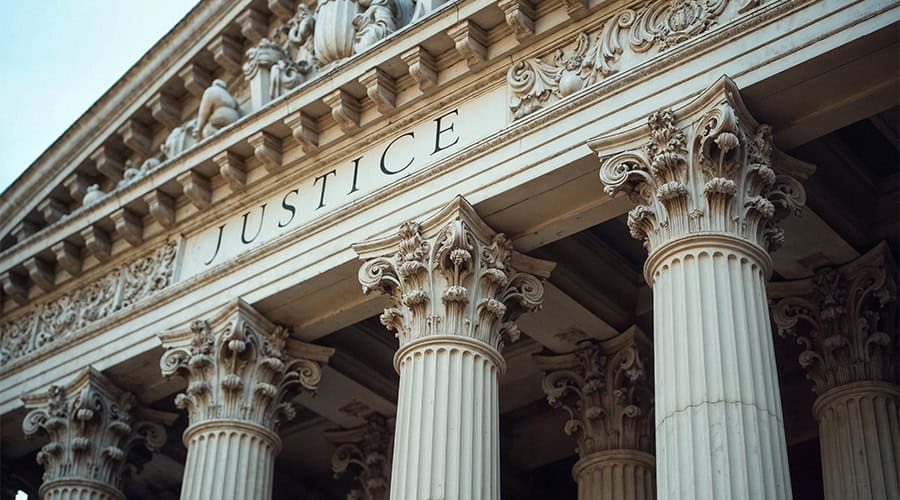This year, Law Day was celebrated on April 30, 2021 and the main theme was the Rule of Law. I had the distinct pleasure of working with a Rhode Island judge to speak with a North Smithfield high school class about what Law Day is, and about what the Rule of Law means. I truly believe that these ideas and values are central enough and important enough in each of our own lives, that Law Day should be celebrated by every American.
Just as the 4th of July celebrates the birth of our nation, Law Day celebrates the underpinnings of our nation on the principles of liberty, democracy, and freedom. I hope that by sharing some remarks here, that thoughts from today regarding the Rule of Law in America can be preserved and shared with a larger audience.
Law Day was started by President Dwight D. Eisenhower on May 1st, 1958.
Eisenhower was the product of an era filled with war and conflict. Eisenhower not only served in the Second World War as the commander of Allied forces in the campaigns against the Italians and the Germans, but later, as president of the United States, contended with the Soviet Union during the Cold War.
In World War II, the United States faced the dual threat of the fascists in Europe(Germans and Italians), and the imperialist Japanese in the Pacific. The central focus of the fascists was to put nation and race above all else, and the imperialists sought to do the same for their empire. With the pivot in the late 1940’s into the new Cold War against the Soviet Union, the nemesis became communism, which was a broader socioeconomic ideology, but nevertheless one that clearly placed the communal or collective at the center of the focus and above all else.
Where the United States has always fundamentally disagreed with fascism, imperialism, and communism is with regard to the role of the individual. In those other systems, the individual and his or her rights always ends up as inferior to, and sacrificed for, the greater ideal. Ideals, just as any other abstract concept, are only as good as those seeking to enact and benefit from them. History speaks for itself as to how humanity has fared at the hands of these demagogues.
In creating the first Law Day, Eisenhower encapsulated this sentiment with the expression, “In a very real sense, the world no longer has a choice between force and law. If civilization is to survive, it must choose the rule of law.” It is, in this way, very fitting that the theme this year is the Rule of Law.
What is the Rule of Law?
The Rule of Law is described by the World Justice Project as, “a durable system of laws, institutions, norms, and community commitment that delivers accountability.” While this is an accurate description, it may not be the most illuminating. Instead, it may be more helpful, in trying to better understand the Rule of Law, to think about what it is not.
Throughout history, there have been numerous examples of alternative ways of ruling: kings, queens, and monarchs to name but a few. These earlier ways of organizing society have a fundamental difference from the Rule of Law: the sovereigns in these earlier systems are always the elite. In rule by a king or queen, the sovereign (that is, the individual or individuals vested with supreme or ultimate authority) is that ruling king or queen. However, in the Rule of Law, sovereignty is transformed and transferred to the people.
Thomas Paine was vividly aware of this dynamic when he wrote in 1776 that “In America, law is king.” It is not merely an accidental use of flowery language that our United States Constitution begins with the three words “We The People.” This is an explicit acknowledgement that under our Constitution, sovereignty remains with the people, and the expression of the consensus of the people on the form of government is laid-out and locked-in with the Constitution.
Out of the three branches that are created under the Constitution, it is perhaps the judicial branch that is most in touch with its roots, because it is the one called upon to interpret how the Constitution applies to new and unforeseen circumstances and problems. The Constitution is based on the fundamental principles that the individual matters in our society, and each of us, by our mere existence, is endowed with certain, unalienable rights.
However, such rights are just vacuous lip-service if they are not accompanied with an ability and willingness to be enforced. The Supreme Court aptly captured this concern in the 1803 case Marbury v. Madison with the rhetorical question, “What is a right without redress?” No human institution may be perfect, but our Court has consistently held towards a trajectory of vindicating the rights of the individual, and has always taken seriously its role as a check against the transgressions of overreaching and injustice. When the Supreme Court moved into its new building in 1935, it was in recognition of this core principle, and the Court’s unwavering commitment to it, that inscribed above the main entrance were the words “Equal Protection Under Law.”
It is fitting that in honor of Law Day each year, the American Bar Association, in partnership with local bar associations, sends teams of attorneys and judges into local classrooms to speak with students. As the old proverb says, “a journey of a thousand miles begins with a single step,” and by each of us doing our part, we can help to ensure that the principles of liberty, democracy, freedom, and the Rule of Law will be passed onto future generations.

